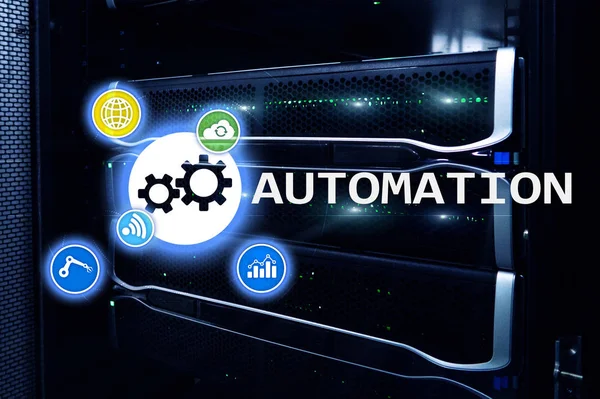An Alternative Approach to Treasury Automation

Introduction: According to the Association for Financial Professionals’ 2020 Strategic Role of Treasury Survey Report, 36% of companies believe that technology and automation will enable greater focus on higher value-added work in the next three years. Emerging technologies like Robotic Process Automation (RPA), Artificial Intelligence (AI), and Machine Learning (ML) promise to streamline operations, increase efficiency, reduce costs, and improve decision-making. However, corporate treasury departments have lagged behind in adopting cutting-edge technologies for automation, often due to smaller team sizes, a lack of understanding of the benefits, and the high cost of these technologies.
Challenges with RPA Adoption in Treasury: While RPA technologies are becoming more affordable, achieving a return on investment (ROI) remains challenging for treasurers. The licensing costs of an RPA bot alone can range from $5,000 to $20,000 per year. Additionally, implementation costs—including expenses for hiring RPA-trained SMEs, consulting, infrastructure, third-party integration, and initial configuration—can easily amount to 20 times the licensing cost. This high cost, combined with a steep learning curve, can discourage treasurers from leveraging RPA. However, there are more cost-effective alternatives to expensive RPA platforms for automating treasury and related processes.
The Gap Left by TMS, ERP, and Bank Portals: Many treasury teams rely on Treasury Management Systems (TMS) or Enterprise Resource Planning (ERP) systems to automate treasury processes. While both ERP and TMS are valuable tools, they often fail to fully automate day-to-day treasury operations. For instance, treasury and payment processing teams may still use bank portals to manage ACH positive pay, stop payments, and ACH debit fraud, as TMS/ERP systems typically do not automate these aspects of payment processing. Furthermore, most TMS/ERP systems cannot manage bank signatories electronically, download lockbox data, retrieve monthly bank statements, or handle ACH addenda. This leaves treasury teams disillusioned with TMS and searching for more complete solutions.
The lack of automation impacts not only treasury teams but also other finance teams such as Accounts Payable, Accounting, and Cash Applications, who often resort to manual processes for downloading and processing data from banks. For example, a Cash Applications analyst may spend hours manually reconciling cash receipts with open accounts receivable and remittance information. Similarly, an AP analyst may regularly log into the bank portal to issue stop payments or manage check/ACH positive pay. Corporate accounting teams may manually download monthly bank statements to reconcile cash as part of the monthly closing process. An auditor might request email proofs of payment approvals since TMS or ERP systems fail to implement corporate delegation of authority in payment approval workflows.
Automating with Bank APIs and Browser Automation: Recent developments in banking technology and automation have begun to address these unmet needs. The solution space for automating data processing from banks, merchant card processors, and fintech companies is becoming increasingly interesting. Banks and financial institutions are now offering APIs to conduct various banking services. For example, Goldman Sachs has built a digital banking infrastructure called Marcus, while other major banks have expanded their API offerings.
Bank APIs can be a more effective and affordable alternative to TMS. Unlike TMS, which relies on file-based communication with banks using secure internet protocols like SFTP or AS2, APIs offer on-demand communication and near real-time data access. APIs are also generally cheaper than SFTP-based integration, making them an attractive option for forward-looking treasurers who question the need for a TMS. Several fintech companies are already leveraging bank APIs to connect with banks, download data, and perform transactions on behalf of clients.
In addition to using bank APIs, browser-based automation can mimic user actions to download data and perform transactions on bank portals. At Crestfin, we developed a Python-based solution that automatically downloads bank balances and transactions daily or on-demand. Browser automation enables us to retrieve any information available on the bank portal, not just what the bank offers via SFTP or APIs. For example, we automated the daily download of hundreds of electronic lockbox images from the bank portal, storing them on SharePoint for easy access. This automation not only aids the Cash Applications team but also saves the treasurer bank fees associated with lockbox file transmission. By downloading and storing data on corporate servers, we saved thousands of dollars in bank fees and avoided using the bank’s expensive data archival services.
Browser automation can either fully replace bank APIs or complement them, depending on the level of automation a corporate treasurer wishes to achieve. We also built a notification system that surpasses what the bank or TMS/ERP systems offer.
Cost-Effective Alternatives to RPA: RPA tools can perform browser-based automation, but creating even a simple solution on an RPA platform requires significant effort. At Crestfin, we hired experienced Python developers who created sophisticated automation solutions at a fraction of the cost using open-source software libraries. This approach eliminated the need for RPA bot licensing fees and expensive RPA consultant fees. We also developed solutions to download credit card fee data from payment processors, which we then combined with customer receipts to gain insights into customer payment behavior and expensive credit card fees.
Conclusion: The examples provided above are just the tip of the iceberg in building better automation and data analytics for treasury and corporate finance. While no single product on the market can automate corporate treasury entirely, low-cost tools, technologies, and expertise are already available for corporate treasurers and CFOs to leverage today. The future of treasury automation lies in the smart integration of these emerging technologies, paving the way for more efficient and cost-effective financial operations.

